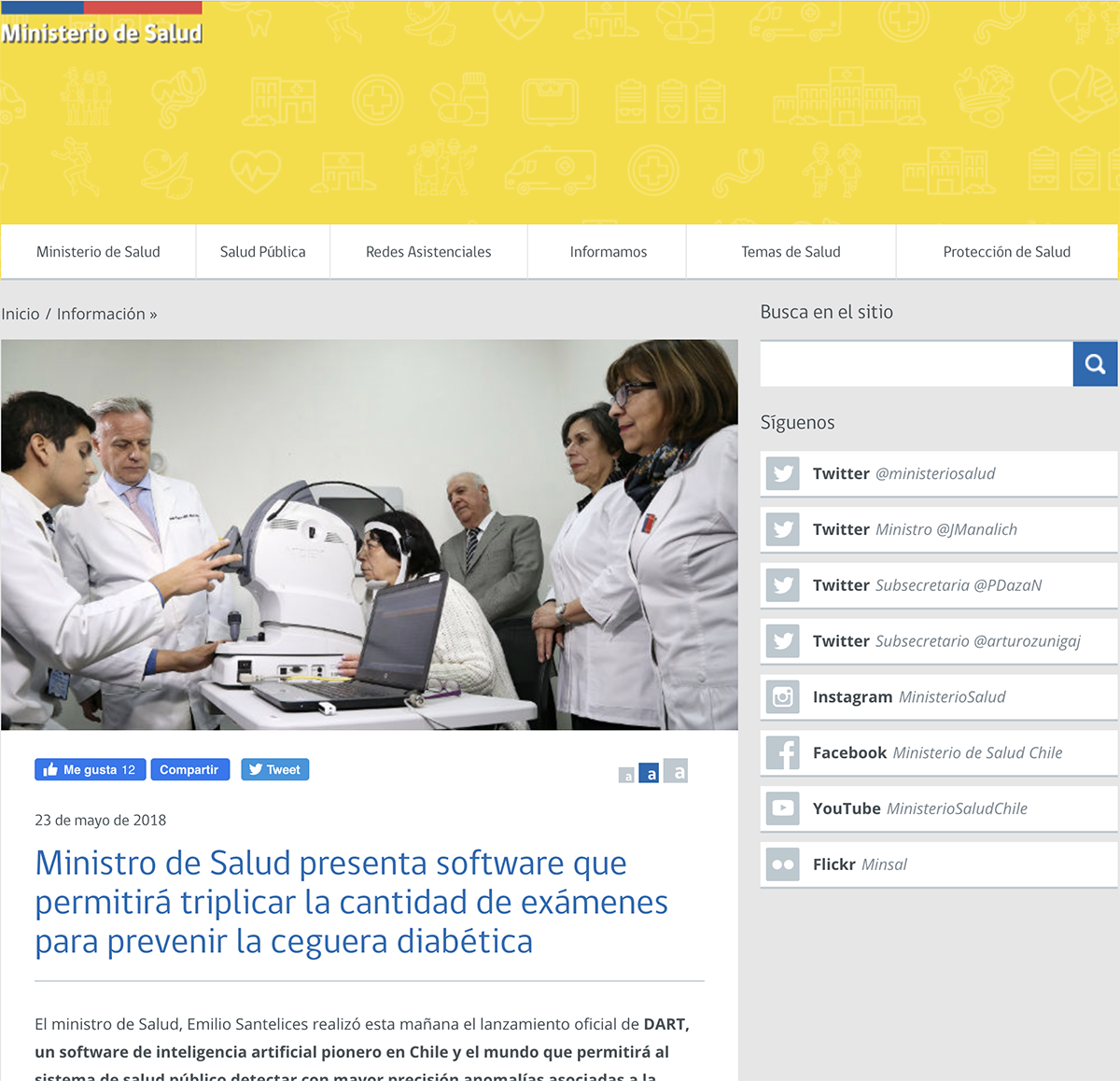
Innovative digital platform detects, through photographs, the patterns of diabetic retinopathy, the most frequent cause of loss of vision of the population of working age worldwide, determining early on if the patient needs specialized care.
With more than 12% of its population affected by the disease, Chile has the highest rate of diabetes in South America. A common complication is retinopathy, which often develops due to lack of timely detection, as a result of the shortage of medical appointments available with specialists in the Primary Care System. Set against this backdrop, the DART platform was created by Telediagnostics (teledx.org), a high-impact social enterprise supported by the Complex Systems Engineering Institute (ISCI). Based on artificial intelligence, it increases the coverage of preventive annual screening within the diabetic population and automates the diagnosis of the disease, leading diabetes patients who risk blindness to take the eye test.
Diabetes is a public health problem of increasing prevalence. It is estimated that more than 600 million people in the world will suffer from the disease by 2040. Studies show that at least 20% of them will show signs of an asymptomatic deterioration of blood vessels that supply the retina. The early diagnosis of this retinopathy makes it possible to avoid the development of blindness. The problem detected by DART researchers was that 70% of the diabetics in Chile would not be controlled annually to rule out the onset of the disease.
“There is an enormous gap between the growth rate of the population to be treated, versus the growth rate of ophthalmic capacity”, explains José Tomás Arenas, Co-founder of Telediagnostics. “This motivated us to seek multidisciplinary solutions with cutting-edge technology that allowed us to make diagnoses through a digital photograph of the eye. This is uploaded to the cloud via the internet and is complemented by other medical records. Then, all the data is processed by an artificial intelligence model of Deep Learning that we prepare and train based on the knowledge of experts.”

DART discards 80% of registered exams, on average, filtering only suspicious cases. These are remotely reviewed by a specialist through a web interface. If the diagnosis is confirmed, the patient is referred for face-to-face care and treatment. The platform is able to manage the life cycle of the exam from the moment patients enter the health center to the point when they are informed of the action to be taken.
At present, DART has been implemented in more than 140 centers in all regions of the country. This has allowed the Public Health System to increase its diagnostic capacity three-fold, lowering health costs for exams, medication, medical appointments, and hospitalization. Also, there has been a reduction in the costs incurred by the loss of patient productivity due to disability.

Tomás Arenas adds “DART makes it economically and temporarily viable for other people with diabetes to access the annual exam. This produces a saving in resources that can be assigned to other uses such as increasing the number of medical technologists in the UAPOS (Ophthalmological Primary Care Unit), investing in new equipment for examinations, hiring more ophthalmologists, performing a greater number of photocoagulations, and receiving a greater flow of patients. On the other hand, from the perspective of those with the illness, the impact on their quality of life and that of their families is invaluable.”
Comunicaciones ISCI
